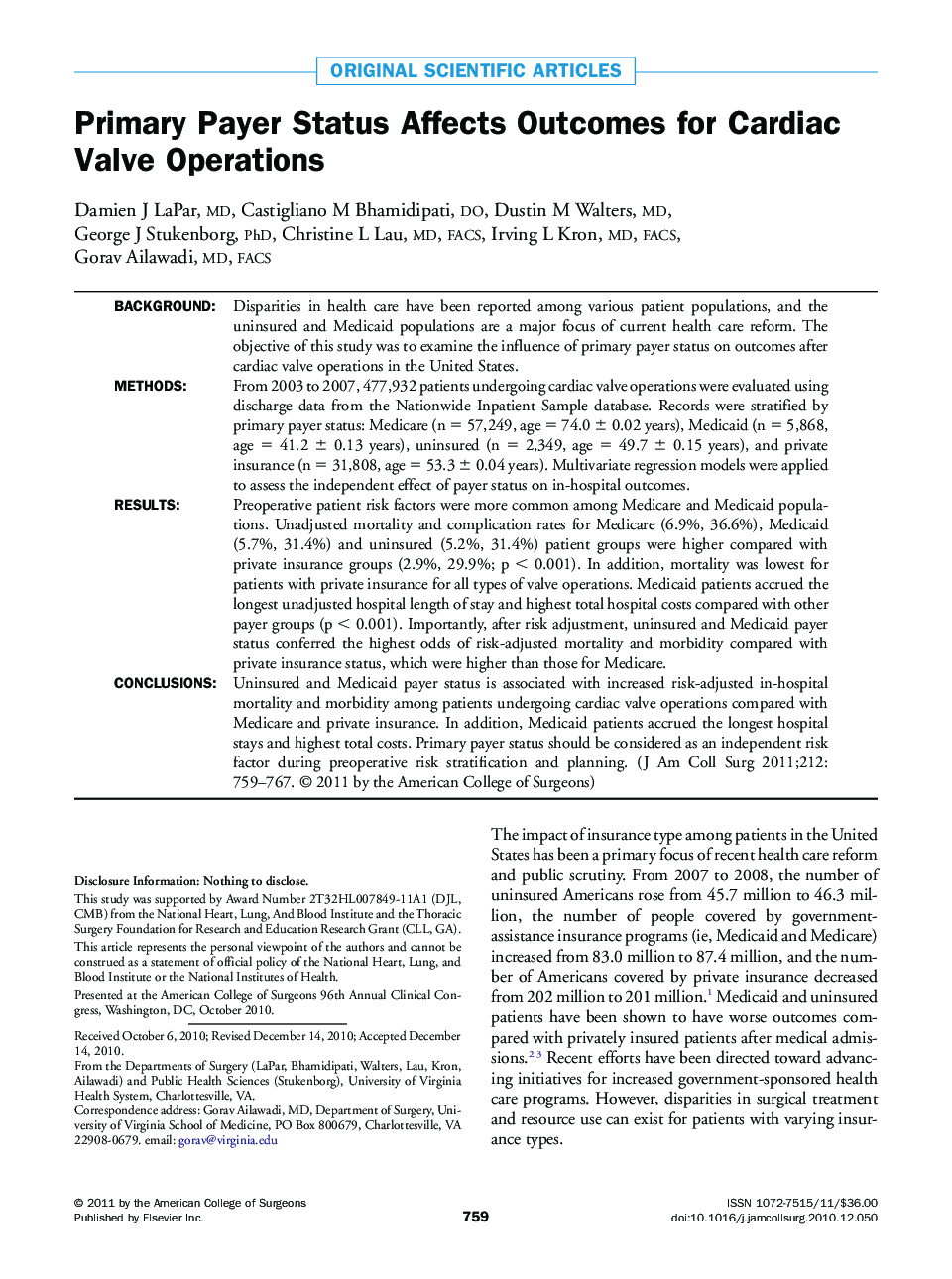| کد مقاله | کد نشریه | سال انتشار | مقاله انگلیسی | نسخه تمام متن |
|---|---|---|---|---|
| 4293204 | 1612273 | 2011 | 9 صفحه PDF | دانلود رایگان |

BackgroundDisparities in health care have been reported among various patient populations, and the uninsured and Medicaid populations are a major focus of current health care reform. The objective of this study was to examine the influence of primary payer status on outcomes after cardiac valve operations in the United States.MethodsFrom 2003 to 2007, 477,932 patients undergoing cardiac valve operations were evaluated using discharge data from the Nationwide Inpatient Sample database. Records were stratified by primary payer status: Medicare (n = 57,249, age = 74.0 ± 0.02 years), Medicaid (n = 5,868, age = 41.2 ± 0.13 years), uninsured (n = 2,349, age = 49.7 ± 0.15 years), and private insurance (n = 31,808, age = 53.3 ± 0.04 years). Multivariate regression models were applied to assess the independent effect of payer status on in-hospital outcomes.ResultsPreoperative patient risk factors were more common among Medicare and Medicaid populations. Unadjusted mortality and complication rates for Medicare (6.9%, 36.6%), Medicaid (5.7%, 31.4%) and uninsured (5.2%, 31.4%) patient groups were higher compared with private insurance groups (2.9%, 29.9%; p < 0.001). In addition, mortality was lowest for patients with private insurance for all types of valve operations. Medicaid patients accrued the longest unadjusted hospital length of stay and highest total hospital costs compared with other payer groups (p < 0.001). Importantly, after risk adjustment, uninsured and Medicaid payer status conferred the highest odds of risk-adjusted mortality and morbidity compared with private insurance status, which were higher than those for Medicare.ConclusionsUninsured and Medicaid payer status is associated with increased risk-adjusted in-hospital mortality and morbidity among patients undergoing cardiac valve operations compared with Medicare and private insurance. In addition, Medicaid patients accrued the longest hospital stays and highest total costs. Primary payer status should be considered as an independent risk factor during preoperative risk stratification and planning.
Journal: Journal of the American College of Surgeons - Volume 212, Issue 5, May 2011, Pages 759–767